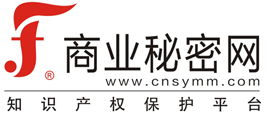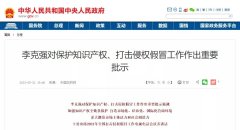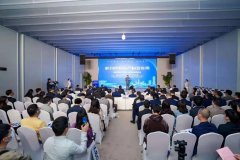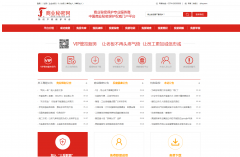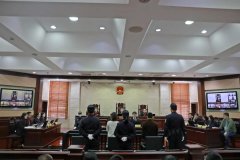商标混淆类型分析与我国商标侵权制度的完善(8)
发布时间:2015-09-15 13:51商业秘密网
[4]See Sara Stadler Nelson,The Wages of Ubiquity in Trademark Law,88Lowa L.Rev.(2003).
[5]See Merges Menell & Lemley, Intellectual Property in the New Technological Age, third edition (2003),p.622,Footnoot 12.
[6]J. Thomas McCarthy, Proving a Trademark Has Been Diluted: Theories or Facts?,41Hous. L. Rev.713.
[7]Case 39/97,Canon Kabushiki Kaisha v. Metro-Goldwyn-Mayer Inc.,1998 E.C.R.-5507, [1999]1 C.M.L.R.77.
[8][美]肯尼斯·万德威尔德:《十九世纪的新财产:现代财产概念的发展》,《经济社会体制比较》1995年第1期。
[9]参见杨立新:《简明类型侵权法讲座》,高等教育出版社2003年版,第65-78页。
[10]See Jeremy Philips, Trade Mark Law: A Practical Anatomy, Oxford University Press, p.343.
[11]参见邵建东:《德国反不正当竞争法研究》,中国人民大学出版社2001年版,第252页。
[12]See Brent Folaom, Reverse Confusion: Fundamentals and Limits,12 J. Contemp. Legal Issues 258(2001).
[13]See Big O Tire Dealers, Inc, v. Goodyear Tire & Rubber Co.,561 F.2d 1365 (10th Cir.1977).
[14]See Joel R. Feldman, Reverse Confusion in Trademarks , 8J.Tech.l. & Pol’y163.
[15]参见李明德:《美国知识产权法》,法律出版社2003年版,第305页。
[16]同前注[14],Joel R.Feldman文。
[17]详细的探讨参见彭学龙:《商标反向混淆探微》,《法商研究》2007年第5期。
[18]邓宏光:《商标混淆理论的扩张》,《电子知识产权》2007年第10期。
[19]同前注[5],Merges,Menell & Lemley书,第623页。
[20]参见黄晖:《驰名商标和著名商标的法律保护》,法律出版社2001年版,第87页。
[21]同前注[5],Merges,Menell & Lemley书,第623页。
[22]同前注[20]黄晖书,第87页。
[23]同前注[15]李明德书,第305页。
[24]See Lois Sportswear, U.S.A., Inc. v. Levi Strauss & Co.,799 F.2d 867,871,872-73(2d Cir.1986).
[25]See Mastercrafters Clock & Radio Co. v. Vacheron & Constantin - Le Coultre Watches, Inc.,221 F.2d 464(2d Cir.),cert. denied,350 U.S.832(1955).
[26]See Rolex Watch U.S.A.,Inc.,645F.Supp. at 495.
[27]See Ferrari S.P.A.Esercizio,944 F.2d at 1245;Rolex Watch U.S.A.,Inc.,645 F. Supp. At 495.
[28][英]·德劳鲍夫:《品牌生存》,梁皎洁译,电子工业出版社2003年版,第189页。
[29]Montre Rolex, S. A. v. Snyder,718 F.2d 524,528(2d Cir.1983).
[30]S. Rep. No. 98-526, at 4-5(1984),reprinted in 1984 U.S.C.A.N.3627,3630-31.
[31] 同前注[11],邵建东书,第253页。
[32]See Farberware, Inc. v. Mar. Coffee, Inc., 740 F. Supp.291,302(D. Del. 1990).
[33]Schechter, The Rational Basis of Trademark Protection, 40 Harv. L. Rev.(1927).
[34]参见张乔:《商标混淆辫析(上)》,《中华商标》2004只年第11期。
[35]参见国家工商行政管理总局商评字(2004)第2692号裁定书。
[36]在另一篇文章中,笔者从消费者认知心理角度对出处混淆、赞助混淆、反向混淆和潜意识混淆做了简要分析,读者可参考。参见彭学龙:《商标法基本范畴的心理学分析》,《法学研究》2008年第2期。
[37]同前注[6],J.Thomas McCarthy文。(作者:彭学龙,来源:法学)
相关阅读:
- 广西壮族自治区百色市英德冷饮部兰忠德侵犯百色市酒厂右江注 2015-05-10
- 有限责任公司的设立及法律地位主要有哪些 2015-06-05
- 2014年宁波十大版权事件评出 2015-06-02
- 商业秘密,请让我们来保护你! 2015-05-10
- "抢”人商号还告人侵权 2015-05-10
- 专家建议绘制专利地图助力我国通信行业抢占制高点 2015-06-04



